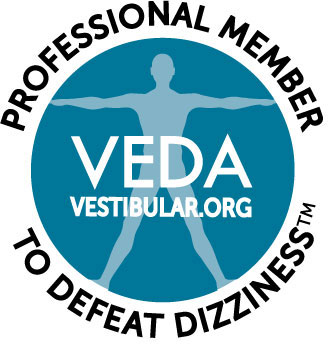Do you have trouble focusing while reading? Do you find yourself losing your place on the page? Does working on the computer give you headaches and make you feel exhausted? If you answered yes to any of these questions, you may be experiencing eye tracking difficulties, a common symptom of binocular vision dysfunction (BVD).

How Eye Tracking Works
Eye tracking is your eyes’ ability to move seamlessly from focusing on one object to another. It requires the muscles of both of your eyes to move perfectly in sync with each other.
For example, if you’re watching sports on TV, your eyes are automatically jumping from one part of the screen to another throughout the game so you can follow the action. If you are reading a book, your eyes are scanning the page, continually moving from one word to the next. Every day, all day long, your eyes are moving together so you can see the world around you.
Eye tracking is a process that people with healthy vision don’t think twice about—but if you have BVD, it can quickly become the bane of your existence. If you have an eye tracking problem, you may be able to see the object you’re currently looking at perfectly clearly, but if you move your eyes to focus on something else—like a different line of text in a book, or a separate area of the screen on your computer—you’ll suddenly lose your place. You may not even realize what’s happening, but will instead experience symptoms like headaches and dizziness when reading or working on the computer.
Why Eye Tracking Problems Occur
Your ability to see clearly relies on an extremely intricate series of interrelated processes. Any irregularities with those processes, or lack of coordination between the different structures in your ocular system, can result in vision problems.
BVD is a condition that arises from a vertical or horizontal misalignment in your eyes—which can be an inborn trait or a disorder that results from an injury—that makes it difficult for your eyes to work together the way they’re supposed to. Rather than seeing one clear image, people with BVD might see an object slightly higher in one eye than the other. The brain rejects double images, so it forces the muscles in your eyes to correct the misalignment. Over time, this puts a strain on your eye muscles, leading to BVD and symptoms like eye tracking problems.
How We Can Help
Using state-of-the-art equipment, Dr. Cheryl Berger Israeloff can perform a highly specialized exam to detect the tiny misalignments in your eyes that signal BVD. We can then fit you with our innovative aligning lenses, which are designed to correct the misalignments in your eyes that cause BVD and eye tracking problems. Our treatment has not only drastically improved the eyesight of thousands of our patients—it has changed people’s lives.
Call the Neuro Visual Center of New York today at (516) 224-4888 to learn more about eye tracking problems or to schedule an appointment. We look forward to helping you!






Do you have any specialists out here on the West Coast? I live in Washington state
Please visit the Vision Specialists of Michigan website to find a doctor nearest you.
I do have binocular vision where one eye sees above the other episodes last 3 to 5 min. makes me weak and loss of balance
I sometimes feel that my eyes aren’t working together it’s hard to explain, it’s like I’m looking down a barrel but my eyes aren’t focused together… it makes me feel not dizzy or lightheaded just a weird like out of body experience…
I get that sensation also and it’s so hard to explain… its like I feel disoriented … I have yet to figure out what’s going on .. have you had any luck?
I have recently in the last week been experiencing something with my left eye only..it’s hard to explain but when I look to the left it’s like disoriented hard to focus..I just had an eye exam a few weeks ago too..it’s the weirdest thing..and it’s only when looking to the left..I find if I close the left eye and turn left using the right eye then I have no problem..also no problem when looking to the right! I’m not sure what I am experiencing , but maybe someone can help
Please return to your eye doctor as your first step.
All the best
I have the same exact problem. It has had happened to me 4 times in 3 years I’m trying to figure out what it is. My opthamologist and optometrist cannot determine cause. I had a concussion in 2019 and think I might be related. Have you had any luck with diagnosis?
I feel similarly about half the time. It gets worse as the day goes on, usually about seven or eight hours after I wake up.
I see clearly, but it is like my left eye feels like it is viewing at a higher plane, although it doesn’t look like that. It just feels as such and I have difficulty tracking objects, more so when driving. It makes it difficult for me to remember in instances when I am moving quickly, or objects around me are moving quickly. As such, I have gaps in what I remember, such as if I am driving, if I don’t try hard to fixate on objects I won’t remember a lot of my drive.
Does that resonate?
I’ve also had instances where I feel weird like this, but then it is like a warmth comes over the back of my neck or back and all of a sudden I see things normally. I did have a neck injury years ago. I have had these visional problems since then, though they got worse seven years after the initial issues.
I sometimes wonder if my nerve controlling the muscles of my left eye are pinched between the Atlas c2/c3 vertebrae and this is what is causing this, or if it is a case of cerebral spinal fluid build up in the brain. I also have very bubbly urine, too, in the aftermath of the car accident, yet when I have had tests on my urine, they say it is normal.
Does any of this ring a bell. Can anyone relate?
Respond to this message, please.
Hi John,
We can only comment on the visual problems but you do describe a vertical eye misalignment.
I have double vision. It is constantly occurring. My wife can see that the right eye is not pointing at the same place as my left eye. I have had no injuries that I am aware of. Do you think Prism lens would correct this?
Yes possibly.
Both my eye cannot see object which sudden lost in focusing and will back to normal when close both eye and relax for 30minits before it strike experiencing like
Woo ! Woo sound .it became serious yesterday where my left eye cannot see at the lower half but back to normal 20 minits later when I close my eye
Please consult your doctor about your symptoms.
Where can I get an assessment of lower bilateral nystagmus for correction here in Tucson or else where in the West?
I am sorry we do not know who to refer you to in Tuscon.
All the best
Tension in the neck and shoulders after looking at small objects for a long time, could the cause be a problem with the eyes?
Yes it can be. Neck pain is the next most common symptom, after headache and dizziness.